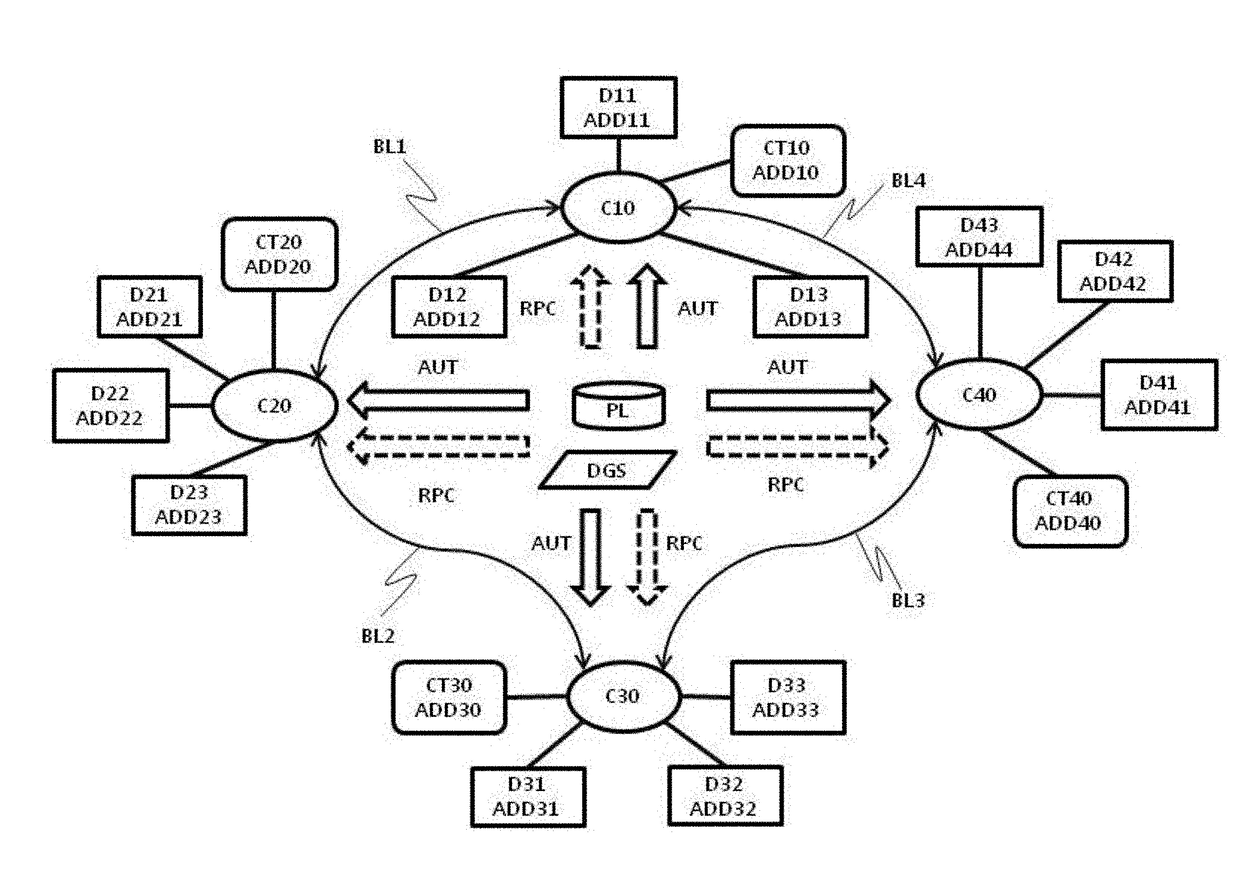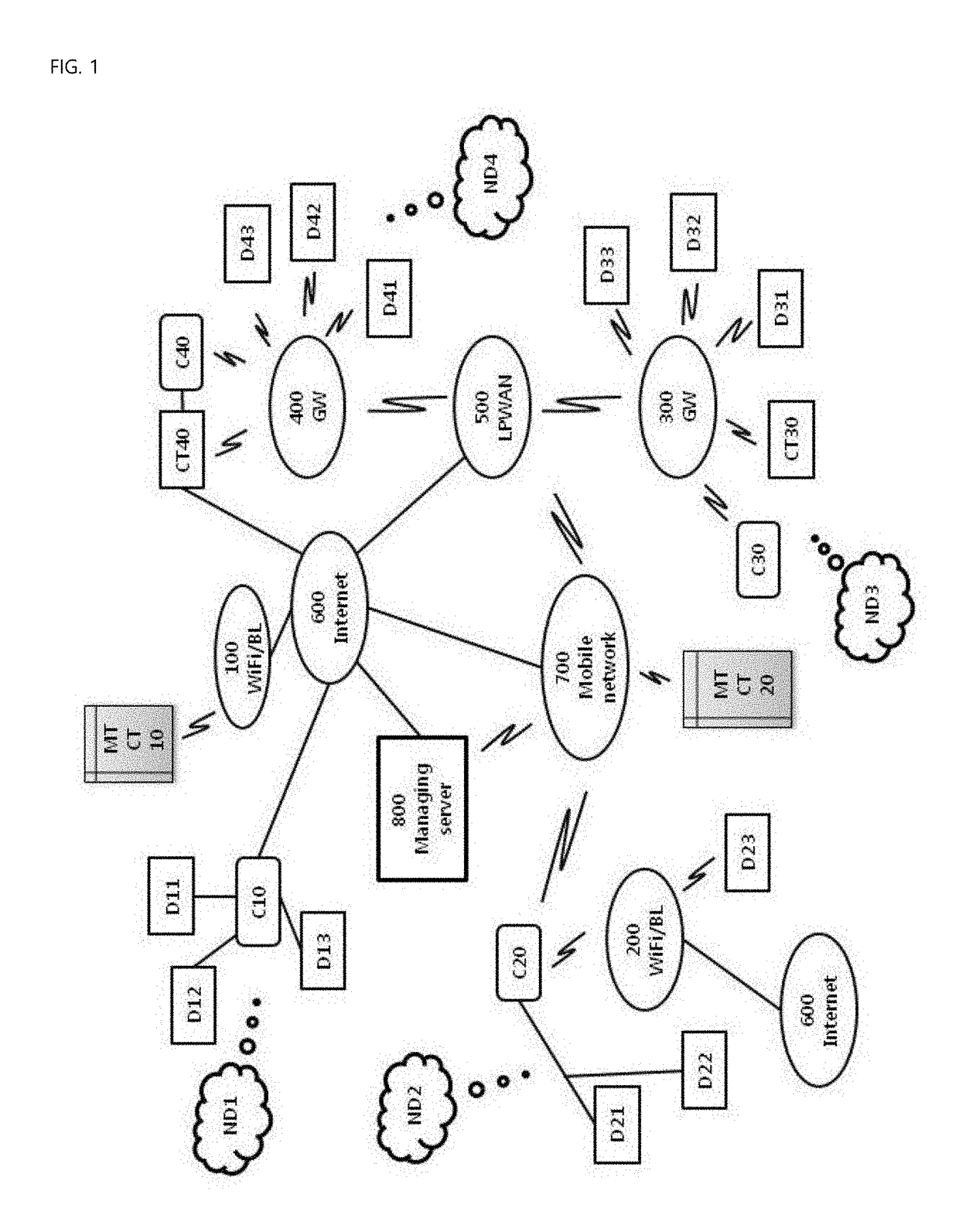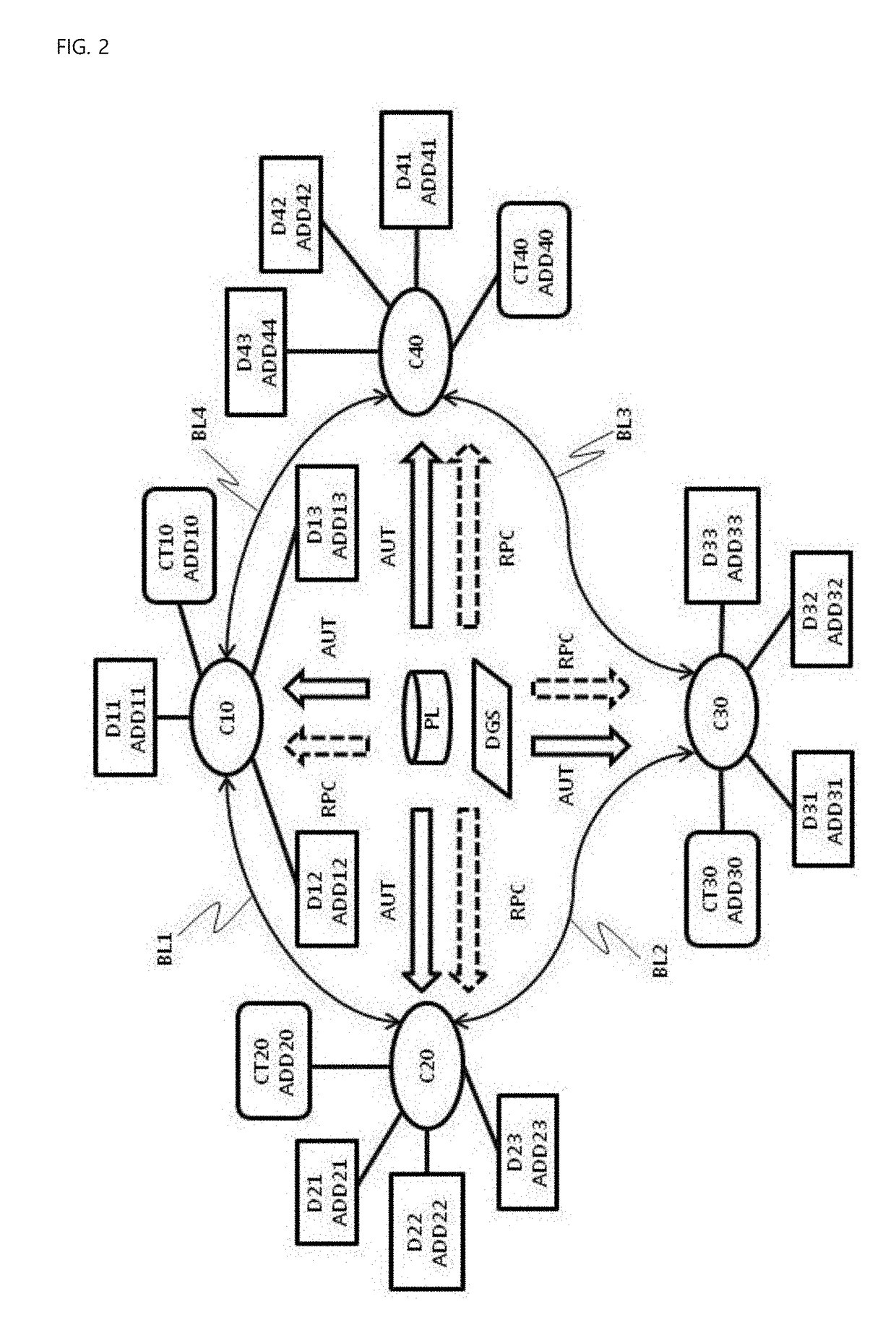Iot-based things management system and method using block-chain authentication
a technology of iot and management system, applied in the field of iot-based thing management system and iot-based thing management method, using block chain authentication, can solve the problems of difficult to prevent the bad person from gaining control of communication, difficult to fundamentally avoid occasional occurrences of difficult to prevent hacking or breakaway of authority. , to achieve the effect of reducing the burden of preventing hacking, reducing the cost of preparing
- Summary
- Abstract
- Description
- Claims
- Application Information
AI Technical Summary
Benefits of technology
Problems solved by technology
Method used
Image
Examples
Embodiment Construction
[0035]Hereinafter, preferable embodiments according to aspects of the present invention will be described with accompanying drawings.
[0036]FIG. 1 is a schematic view of a total structure of an IoT-based thing management system using block chain authentication, according to an embodiment of the present invention. According to an embodiment of the present invention, the IoT-based thing management system using block chain authentication (hereinafter referred to as “thing management system”) is adapted to include a plurality of unit nodes ND1, ND2, ND3 and ND4 which are connected with each other through an Internet 600, a mobile network 700, a Low Power Wide Area Network (hereinafter referred to as “LPWAN”) 500, a gateway (GW) 300 and 400 which may be included in or connect to the LPWAN 500, and the like. If necessary, the thing management system may further include a managing server 800 which may performs update, collection of data, or minimum-required management job. However, even wit...
PUM
 Login to View More
Login to View More Abstract
Description
Claims
Application Information
 Login to View More
Login to View More - R&D
- Intellectual Property
- Life Sciences
- Materials
- Tech Scout
- Unparalleled Data Quality
- Higher Quality Content
- 60% Fewer Hallucinations
Browse by: Latest US Patents, China's latest patents, Technical Efficacy Thesaurus, Application Domain, Technology Topic, Popular Technical Reports.
© 2025 PatSnap. All rights reserved.Legal|Privacy policy|Modern Slavery Act Transparency Statement|Sitemap|About US| Contact US: help@patsnap.com



